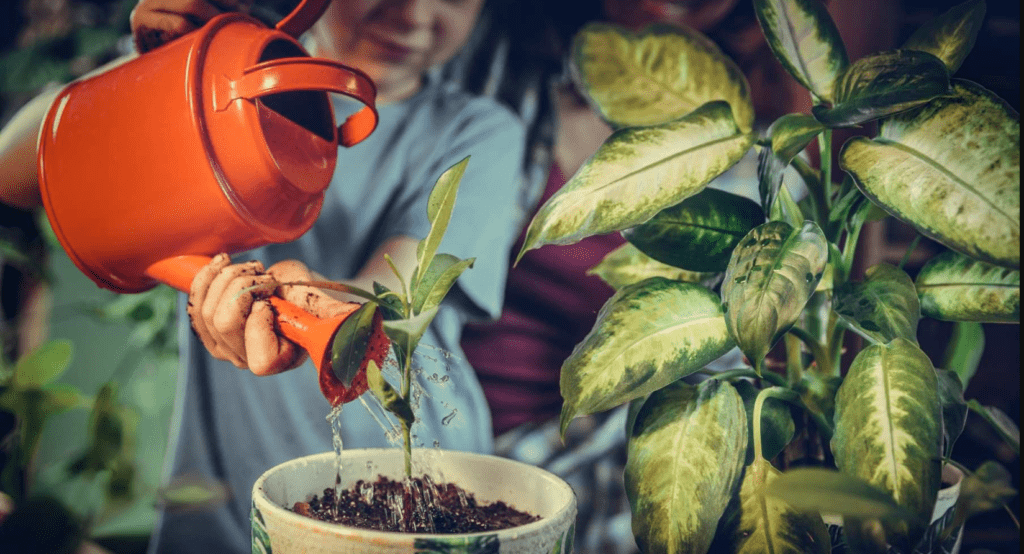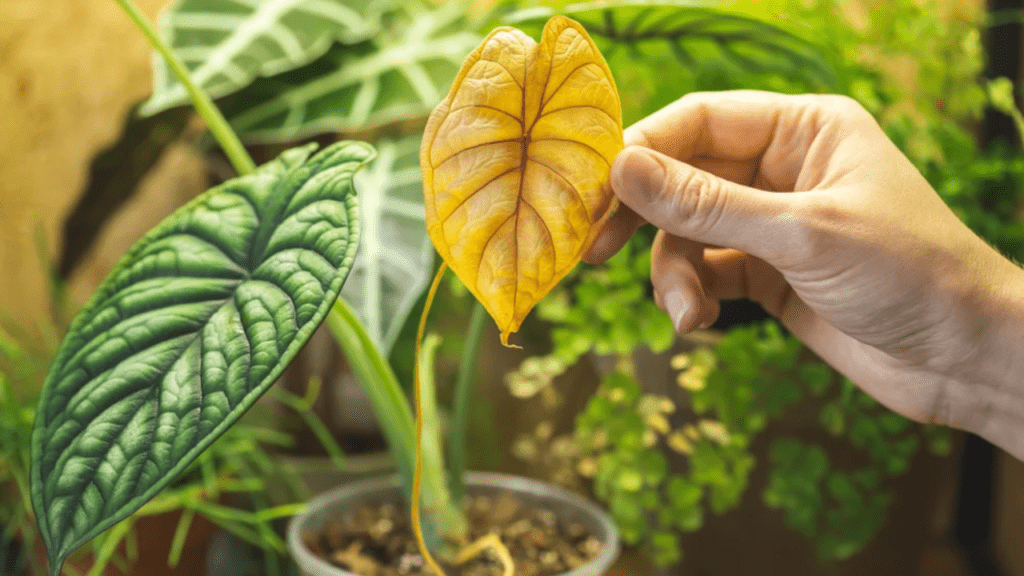If you’re a plant parent, you know the sinking feeling that comes with seeing your beloved Alocasia leaves turning yellow. But fear not, because in this post, we’re going to uncover the reasons behind this common issue and provide you with practical solutions to bring your plant back to its vibrant, healthy state. No more yellow leaves, just lush green foliage. So, if you’re ready to give your Alocasia the care it deserves, keep reading for all the tips and tricks you need to know. Your plant will thank you for it!
First and foremost, it’s important to understand why your Alocasia leaves are turning yellow. This could be due to overwatering, underwatering, inadequate sunlight, or even pests. By identifying the root cause, you’ll be able to take the necessary steps to address the issue and bring your plant back to life. With the right care and attention, you can say goodbye to those yellow leaves and hello to a thriving, vibrant Alocasia once again. So, let’s roll up our sleeves and get to work – your plant is counting on you!
Understand the Common Causes of Yellowing Alocasia Leaves
If you’re a plant lover like me, then you know the heartache of seeing your beloved Alocasia plant’s leaves turn yellow. It can be frustrating and worrisome, but fear not! In this post, we’re going to explore the common causes of yellowing Alocasia leaves and provide you with effective solutions to bring your plant back to its vibrant, healthy state. No more yellow leaves, just thriving, green Alocasia plants. So let’s dive in and get your plant back on track!
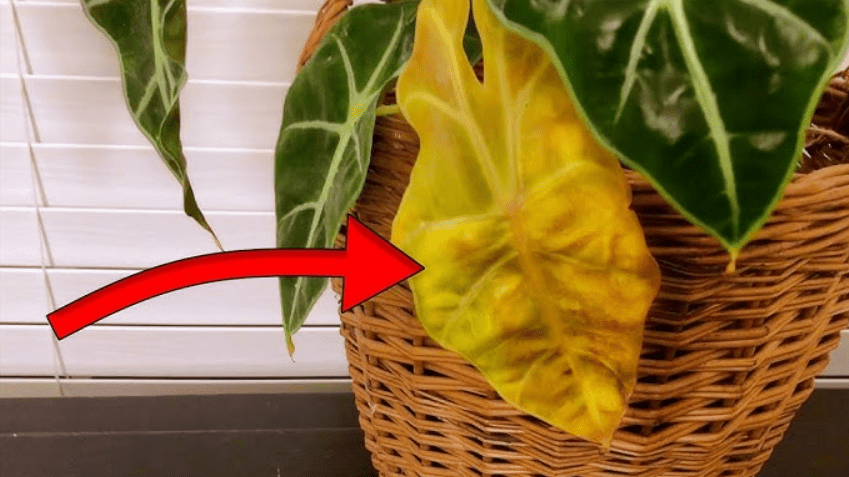
Alright plant enthusiasts, it’s time to take action and save your precious Alocasia plant from those dreaded yellow leaves. By identifying the root cause, you’ll be able to take the necessary steps to address the issue and bring your plant back to life. With the right care and attention, you can say goodbye to those yellow leaves and hello to a thriving, vibrant Alocasia once again. So, let’s roll up our sleeves and get to work – your plant is counting on you! Don’t let those yellow leaves get you down, take charge and bring your Alocasia back to its former glory!
When Alocasia leaves start turning yellow, it can be a sign of various issues affecting the plant’s health. Here’s a breakdown of common reasons for yellowing Alocasia leaves:
1. Watering Issues
- Overwatering: Too much water can lead to root rot, causing leaves to yellow and drop. Ensure the soil drains well and water only when the top inch is dry.
- Underwatering: Lack of water can stress the plant, leading to yellowing and wilting. Check soil moisture regularly and maintain consistent watering.

2. Nutrient Deficiencies
- Nitrogen Deficiency: Yellowing of older leaves often indicates a lack of nitrogen. Use a balanced, nitrogen-rich fertilizer to address this issue.
- Potassium Deficiency: Symptoms include yellowing leaf edges and poor growth. Apply a potassium-rich fertilizer to correct this deficiency.
3. Pests
- Spider Mites: These tiny pests feed on plant sap, causing yellowing and speckling. Look for fine webbing and tiny mites on the undersides of leaves.
- Aphids: These insects can also cause yellowing by sucking sap. Check for clusters of small, soft-bodied pests on new growth.
4. Fungal Diseases
- Root Rot: Caused by overwatering or poor drainage, root rot results in yellowing leaves. Inspect the roots and improve drainage to prevent further issues.
- Leaf Spot Diseases: Fungal infections can create yellow spots or patches.
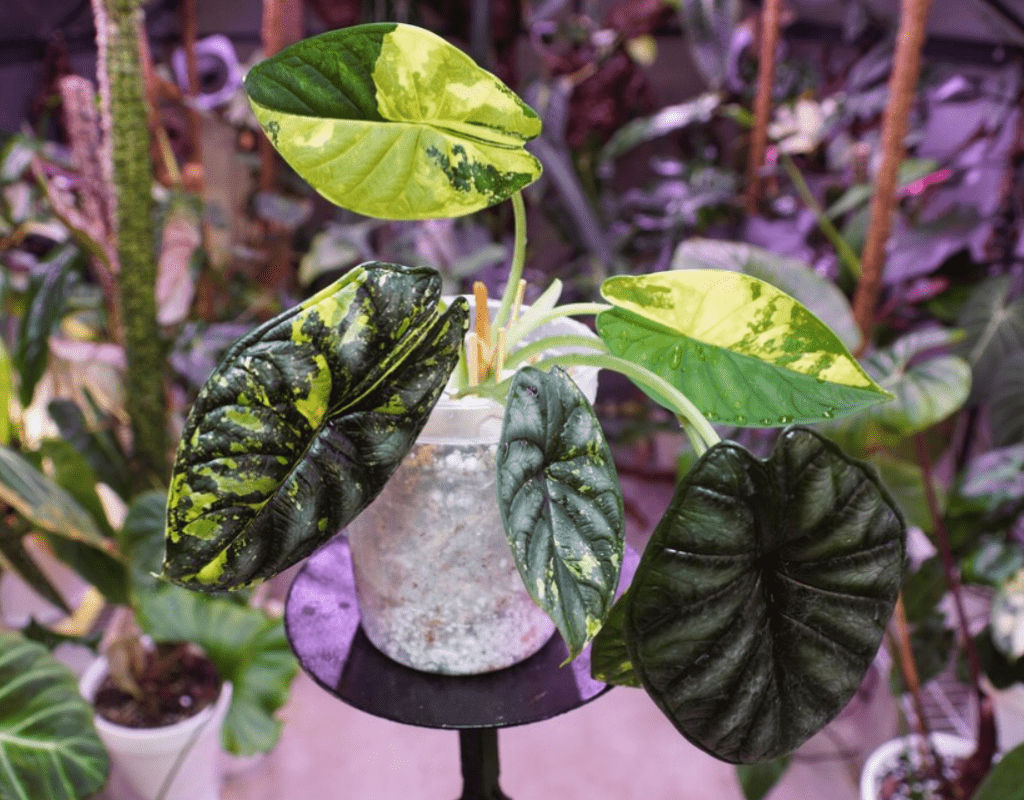
5. Environmental Stress
- Temperature Extremes: Sudden changes in temperature can stress the plant, causing yellowing. Keep your Alocasia in a stable, moderate environment.
- Sunburn: Direct sunlight can scorch leaves, leading to yellowing. Provide some shade if your plant is exposed to intense sun.
6. Soil Conditions
- Soil pH Imbalance: Alocasia prefers slightly acidic to neutral soil (pH 6.0-7.0). An incorrect pH can affect nutrient uptake and cause yellowing. Test and adjust the soil pH as needed.
- Soil Compaction: Compacted soil restricts root growth and can lead to yellowing.
7. Chemical Damage
- Fertilizer Burn: Over-fertilization can lead to chemical burns, causing yellowing and browning of leaves.
It is crucial to provide a stable and moderate environment for your Alocasia plant. Direct sunlight can scorch the leaves, leading to unsightly yellowing. If your plant is exposed to intense sun, it is important to provide some shade to protect it. Additionally, ensure that the soil pH is slightly acidic to neutral, as an incorrect pH can affect nutrient uptake and cause yellowing. Compacted soil can also restrict root growth and lead to yellowing, so it is important to address soil compaction. Furthermore, be cautious about over-fertilizing, as this can lead to chemical burns and cause yellowing and browning of the leaves. By maintaining a stable environment and carefully monitoring soil conditions and chemical exposure, you can prevent yellowing and ensure the health of your Alocasia plant.
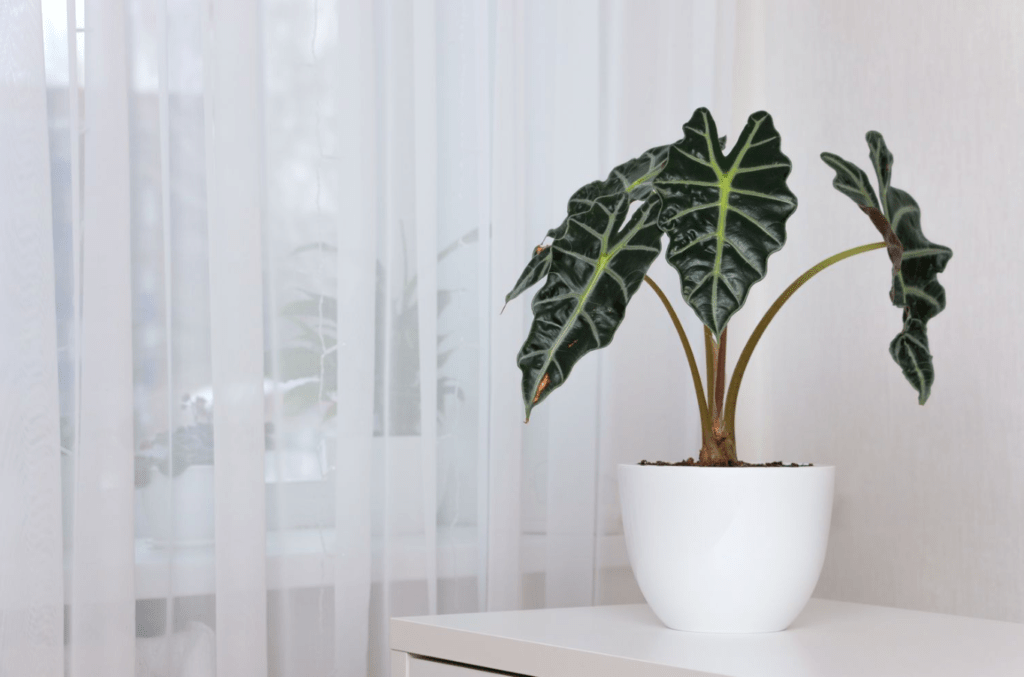
Assessing and Stabilizing Your Alocasia’s Environment
It is crucial to provide a stable and moderate environment for your Alocasia plant. Direct sunlight can scorch the leaves, leading to unsightly yellowing. If your plant is exposed to intense sun, it is important to provide some shade to protect it. Additionally, ensure that the soil pH is slightly acidic to neutral, as an incorrect pH can affect nutrient uptake and cause yellowing. Compacted soil can also restrict root growth and lead to yellowing, so it is important to address soil compaction. Furthermore, be cautious about over-fertilizing, as this can lead to chemical burns and cause yellowing and browning of the leaves.
By maintaining a stable environment and carefully monitoring soil conditions and chemical exposure, you can prevent yellowing and ensure the health of your Alocasia plant. Taking the time to assess your plant’s environment and care routine is the responsible and caring thing to do. Your Alocasia plant will thrive and be vibrant if you take these steps to ensure its well-being. Don’t let chemical damage ruin the beauty of your plant—take proactive steps to prevent it. Your Alocasia plant will thank you for it!
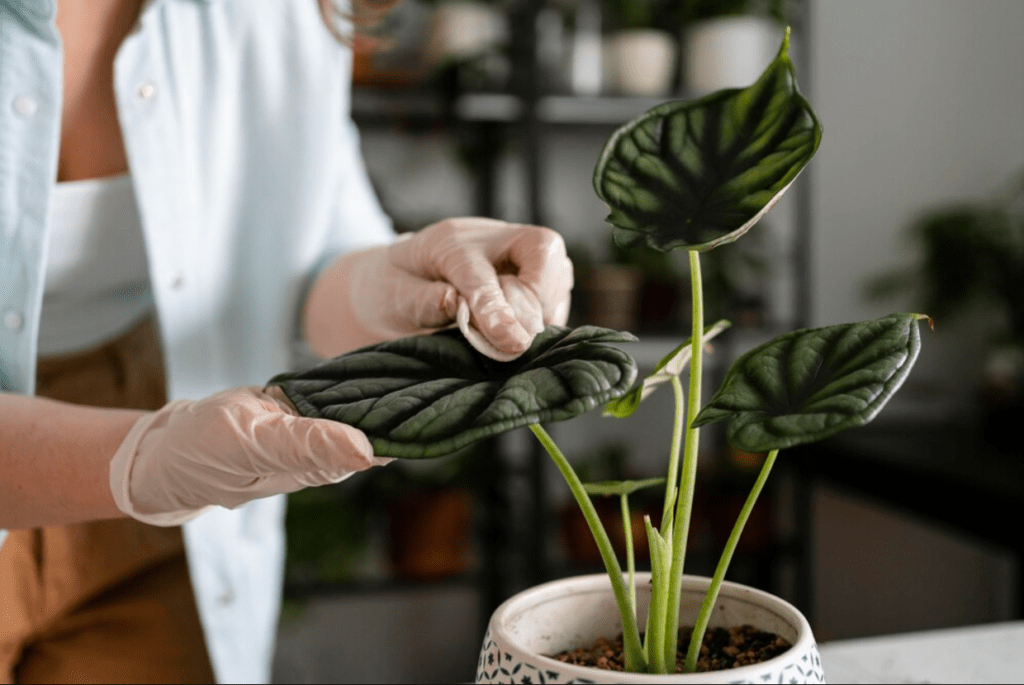
Proactive Care for Long-Term Alocasia Health
Ensuring the health and vibrancy of your Alocasia plant is crucial for its well-being. One of the key factors to consider is the soil pH, which should be slightly acidic to neutral. This can greatly affect the plant’s nutrient uptake and prevent yellowing of the leaves. Additionally, compacted soil can hinder root growth, leading to yellowing and browning. It is essential to address soil compaction to ensure the plant’s health. Over-fertilizing can also have detrimental effects, causing chemical burns and further yellowing of the leaves. To prevent these issues, it is important to carefully monitor soil conditions and chemical exposure.
By taking these proactive steps, you can prevent yellowing and ensure the overall health of your Alocasia plant. Your plant will thrive and be vibrant if you take the time to assess its environment and care routine. It is your responsibility to provide the best possible care for your plant, and it will thank you for it. Don’t let chemical damage ruin the beauty of your Alocasia plant—take action to prevent it.
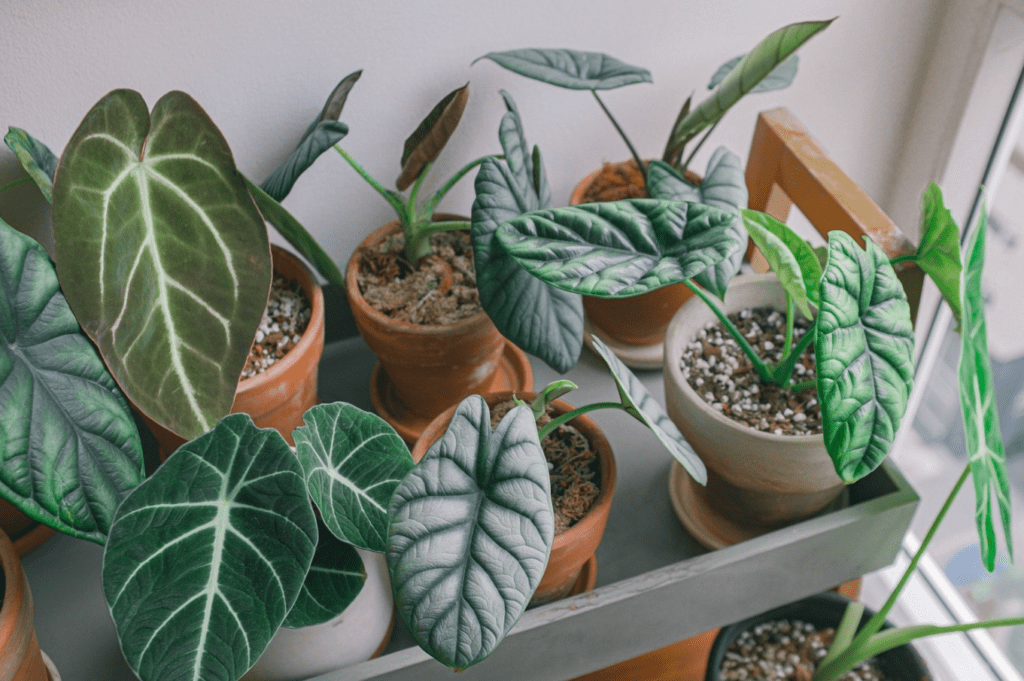
Check for Pest Infestations
Pests such as spider mites and aphids can quickly damage the leaves and overall appearance of your plant if left unchecked. By regularly inspecting your plant and taking proactive measures to eliminate any pests, you can ensure that your Alocasia remains healthy and beautiful. Don’t let pesky pests ruin the hard work you’ve put into caring for your plant – stay vigilant and keep an eye out for any signs of infestation. Your Alocasia will thank you for the extra attention and care, and you’ll be able to enjoy its beauty without the worry of pest damage. Don’t let these pesky critters win – take action and protect your Alocasia plant from pest infestations. Your plant is counting on you to keep it safe and healthy.
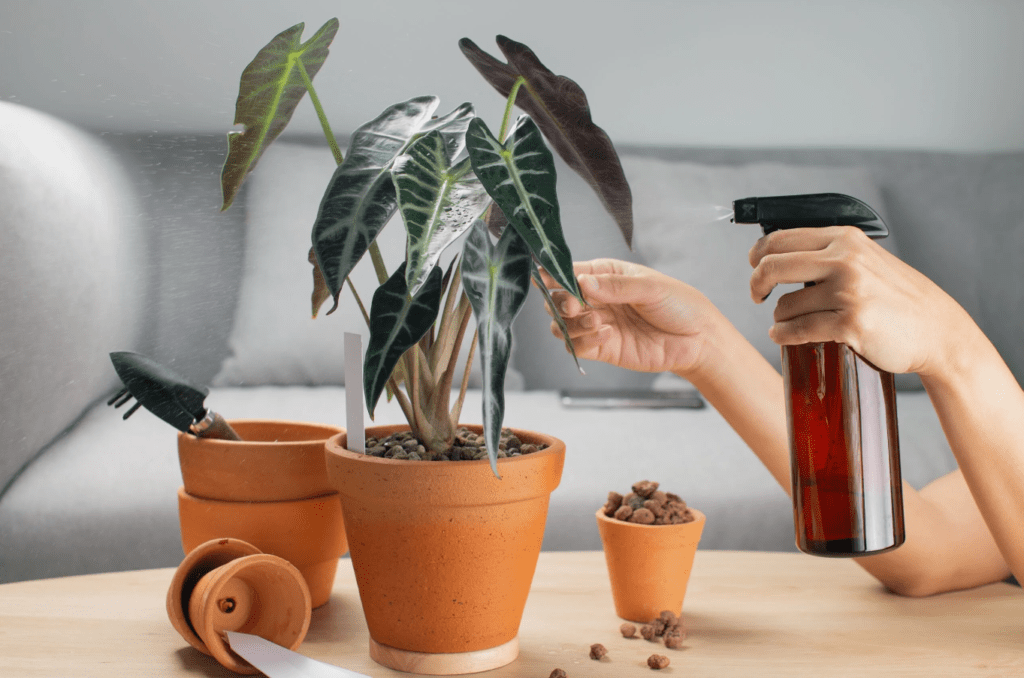
Repot Your Alocasia if Necessary
Sometimes, your Alocasia plant may outgrow its current pot or the soil may become compacted, affecting the plant’s health. It’s important to regularly check the condition of your plant’s roots and soil, and if necessary, repot your Alocasia into a larger container with fresh soil. This will allow your plant’s roots to continue growing and thriving, ensuring that your Alocasia remains healthy and vibrant. Don’t neglect the importance of repotting when needed – your Alocasia is relying on you to provide it with the space and nutrients it needs to flourish. So, take the time to give your plant the care and attention it deserves, and it will reward you with its beautiful, lush foliage. Your Alocasia is counting on you to make the right decisions for its well-being, so don’t let it down.
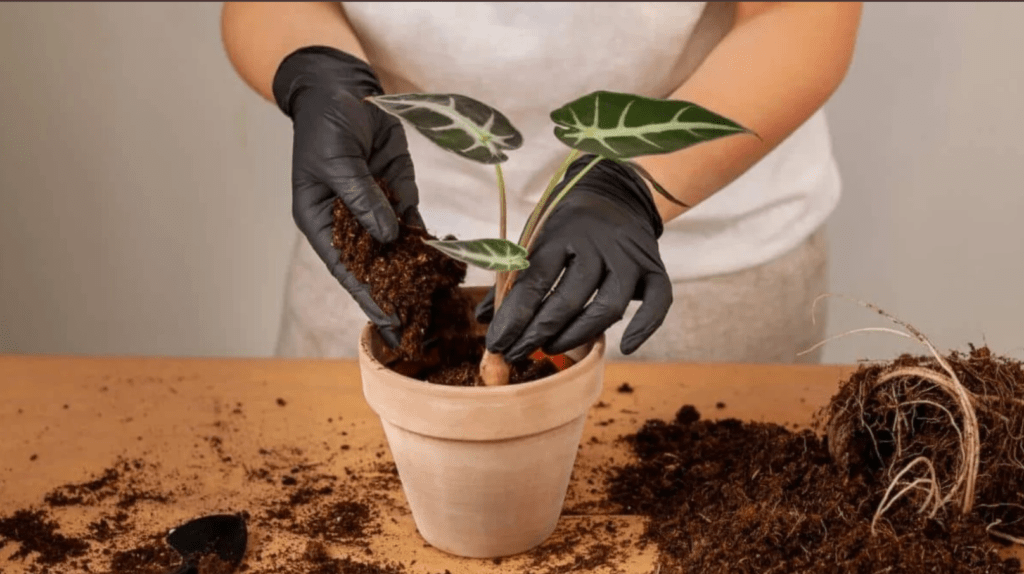
Provide Proper Nutrients and Fertilization
In order for your Alocasia plant to thrive and grow, it is crucial to provide it with the proper nutrients and fertilization. A balanced fertilizer with a higher nitrogen content will help your plant produce healthy, vibrant leaves. Make sure to fertilize your Alocasia plant during the growing season, but be careful not to over-fertilize as this can lead to nutrient burn and damage your plant. Additionally, consider using organic fertilizers or slow-release fertilizers to ensure a steady supply of nutrients for your Alocasia. Your plant is relying on you to give it the nourishment it needs to flourish, so be diligent in providing it with the proper nutrients and fertilization. By doing so, you will help your Alocasia plant stay strong, healthy, and vibrant. Remember, your plant is counting on you to make the right choices for its well-being, so don’t let it down.
Monitor and Maintain Your Alocasia’s Health
It is essential to monitor and maintain the health of your Alocasia plant to ensure that it continues to thrive and grow. Regularly check for signs of pests, diseases, and nutrient deficiencies, and take prompt action to address any issues that may arise. Keep an eye on the leaves, stems, and soil to ensure that your plant is healthy and happy. Regular maintenance, such as pruning dead or damaged leaves and providing proper watering and sunlight, is also crucial for the overall health of your Alocasia. By staying vigilant and proactive in monitoring and maintaining your plant’s health, you can help it to flourish and thrive for years to come. Your Alocasia is relying on you to keep it healthy and strong. So, make it a priority to monitor and maintain its well-being. Your efforts will be rewarded with a beautiful and vibrant plant that brings you joy and beauty.
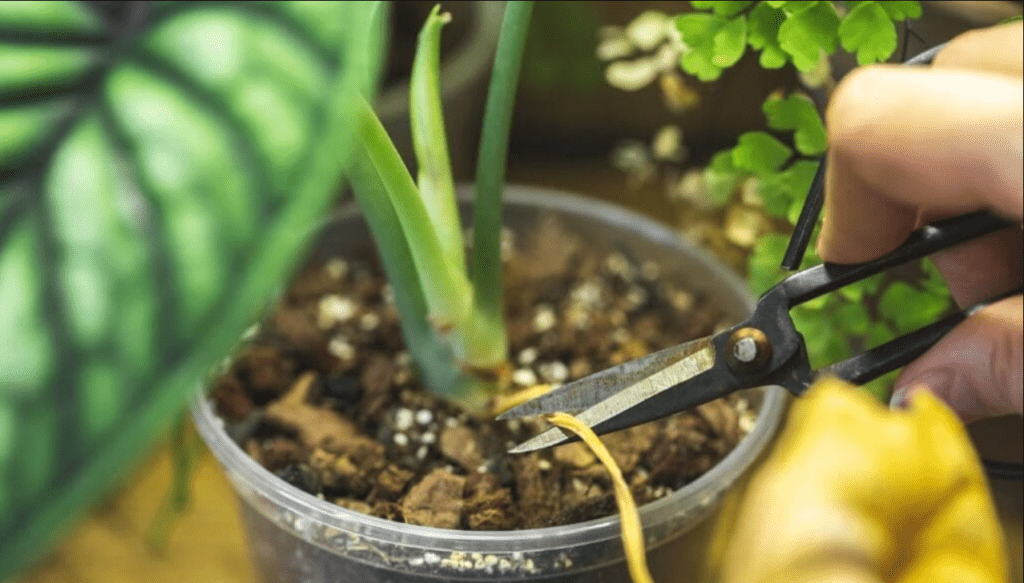
Celebrate the Return of Vibrant Green Leaves
There’s nothing more satisfying than seeing your Alocasia plant thrive with vibrant green leaves. The return of lush, healthy foliage is a cause for celebration and a testament to your care and dedication. Take a moment to appreciate the beauty and resilience of your plant as it grows and flourishes. The vibrant green leaves are a symbol of your hard work and attention to detail. They bring a sense of joy and vitality to any space. Embrace and celebrate the return of vibrant green leaves as a reminder of the beauty and life that your Alocasia brings to your home. Keep up the great work and continue to nurture your plant to ensure many more years of stunning foliage. Your efforts are truly paying off, and it’s time to revel in the natural beauty that your Alocasia has to offer.
In conclusion, taking care of your Alocasia plant is crucial to maintaining its vibrant green leaves. By understanding the reasons behind the yellowing leaves and implementing the right solutions, you can ensure that your plant stays healthy and thriving. Don’t let yellow leaves discourage you – with the right care and attention, you can bring your Alocasia back to its beautiful state. Check out our comprehensive guide for all the tips and tricks to keep your Alocasia looking its best. Your plant will thank you for it!
Frequently Asked Question (FAQ)
